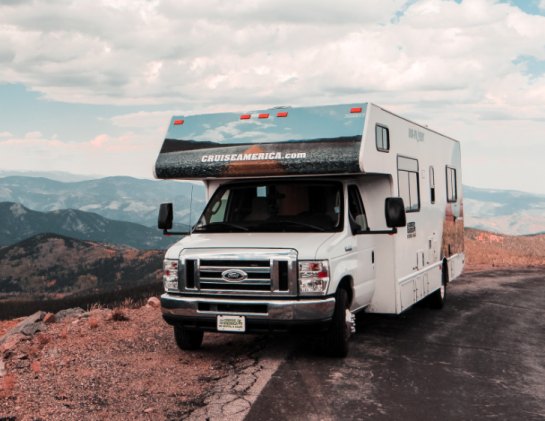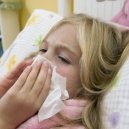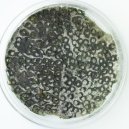Find a pre-screened local mold removal specialist Free Estimate
Find a Mold Specialist Now
Click or Call, Toll-Free 24/7
Mold In RV's
When you take a trip in your RV, is mold one of your traveling companions? Mold can cause severe health reactions in individuals who are sensitive to it. It’s bad enough to have mold in a room in your home, but think about spending eight or more hours a day, for a week or more at a time, in a small compartment, consisting on average about 400 square feet, and being exposed to mold that you may be sensitive to. That would not end up being a very pleasant vacation.
RV mold is an issue for many owners. One of the major causes of RV mold is condensation. It’s important to keep condensation under control to reduce the chance of mold invading your RV.
There are several ways to help reduce condensation inside your RV:
- Keep the inside temperature slightly higher than what you would normally keep it at. This is especially true if you are camping in areas of higher humidity; like near the beach or lakeside. The difference in temperature inside your RV as opposed to outside can affect condensation. Think about older freezers and refrigerators, ones that don’t have automatic defrosting features. The ice that builds up is a result of the differences between inside and outside temperatures.
- Install window insulation. Most RV windows are not the same high quality as your home’s double or triple insulated windows. DIY insulation kits for windows are available at Amazon.com. These kits will cost somewhere between $20-$30.
- When cooking in your RV, keep pots and pans covered to reduce the amount of water vapor that is placed into the air. Always use existing stove and oven vents. The same can be said about using your bathroom shower or basin. Use the exhaust vent to reduce excess humidity. Also open any windows near these areas for as long as possible to allow humidity to escape.
- After completing a journey in your RV, make sure to empty the refrigerator, turn it off, and when possible leave the refrigerator door open to increase ventilation and thoroughly dry out its interior. This will reduce the chance of humidity buildup and reduce those stale refrigerator odors that any occur when the unit isn’t operating.
- Consider placing moisture-absorbing products inside the RV. These products are inexpensive and do a great job. They contain crystals that absorb moisture and most emit a pleasing citrus aroma. An excellent choice would be DampRid. Remember to change them out after a while.
Roofing, Vents & Seams
Another way for water to enter and cause mold in your RV is through and around roof vents and seams. Rv’s are flexible structures and the stresses, twists, and bumps from just traveling down the road can cause seams to gap or split that may allow water to enter the RV. Also, just walking on the roof can cause the same damage. You should perform periodic checks on the roof of your RV, especially around any seams. Re-seal any visible cracks, gaps or opened seams. There are several products available for the do-it-yourself RV owner to repair these issues. Two of the best products available on Amazon are ProFlexRV Sealant and EternaBond Tape.
When Mold Shows Up Inside
Just like in your home, mold loves uncontrolled or excessive moisture and humidity. Mold may show up in the bathroom, in the kitchen, or in areas near to either of these rooms. If the mold is on a hard surface, mix a 1:1 solution of warm water and white vinegar in a spray bottle. Spray the affected areas and allow at least 10 minutes for the solution to dwell. Then use soap and water to clean the area. Warning: this is only recommended for hard surfaces like ceramic tile, tub surrounds, Formica countertops, etc. Mold will develop on carpet or inside cabinets or vanities (usually constructed from particle board or MFD fiberboard) if the items remain wet for more than 48 hours.
If mold is growing on paneling, inside cabinets, on fabrics, or on carpeting, replacement is recommended. Chances are the mold is not just growing on the surface of these types of materials, but it is also growing inside the wood itself. Just cleaning the mold that is visible on the surface will not be enough to solve the problem.
Also be aware of any discoloration on vinyl flooring. Most vinyl flooring has a paper backing and the paper is an organic food source for mold. If water gets under the vinyl flooring for any reason, it could turn into a mold problem.
Exterior Mold
If the Rv has been sitting for an extended period and not being washed regularly, it is not uncommon for mold or mildew to grow on it. This is especially true if the vehicle is parked in a spot that is shaded only part of the day. Surfaces that are heated and cooled day after day are susceptible to changing humidity levels. And mold loves humidity. Some of the best products designed to care for your RV’s exterior include Gel Gloss RV Wash and Wax, and Meguiar’s M5032 RV One Step Cleaner Wax.
It’s Your Home Away From Home
When mold is found in your RV it should be treated the same as you would if you had found it in your home. It has the same health risks for anyone sensitive to it, anyone that might spend a significant amount of time inside the RV. You should take quick action to not only have the mold removed, but to locate the source of any water leak or intrusion and eliminate it. Just like with your home, a mold problem in your RV can quickly diminish it’s value. If you need help with this there are mold remediation specialists standing by, ready to assist you.
Follow this link to get in touch with a local mold removal expert who will be happy to provide you with a free inspection and price quote.
Return From Mold In RV Camper To What To Do About Mold Page
Written by Mark Huey.
Free Home Inspection By A Mold Removal Specialist
Search This Website

Recent Articles
-
See Our 5 Recommended Mold Removal Companies in Covington, KY
Apr 16, 25 12:59 PM
-
See Our 5 Recommended Mold Removal Companies in Wheaton, IL
Jun 20, 24 10:33 AM
-
See Our 5 Recommended Mold Removal Companies in Aberdeen, SD
Oct 08, 21 04:05 PM





